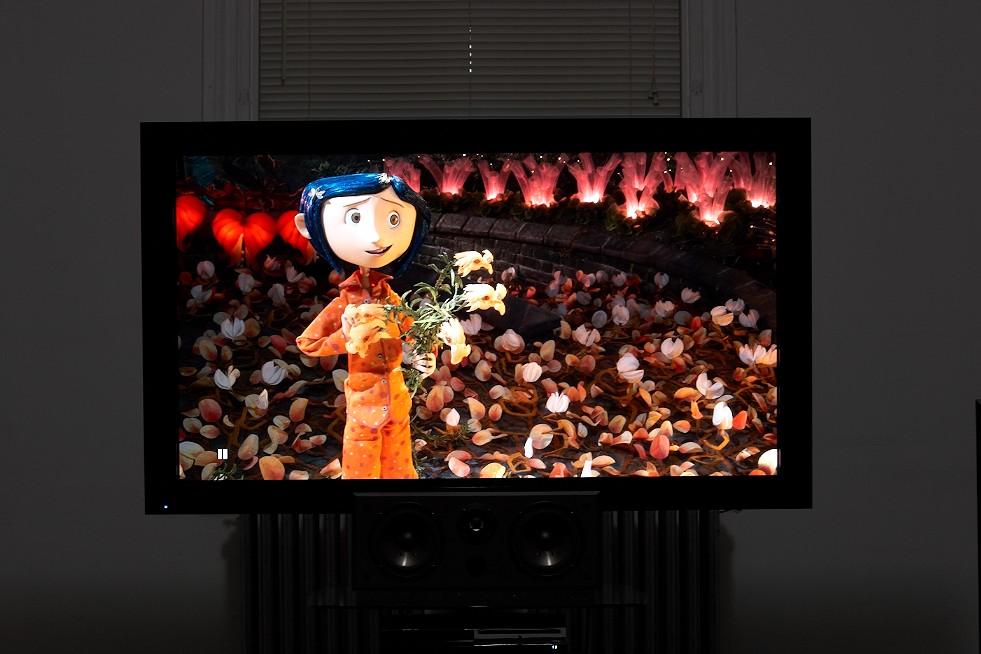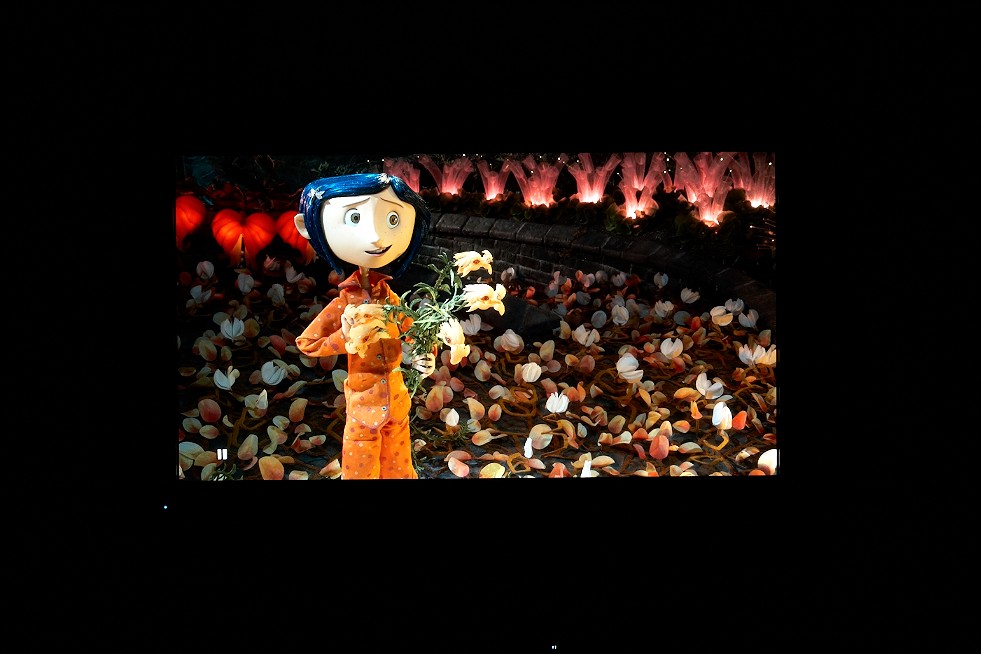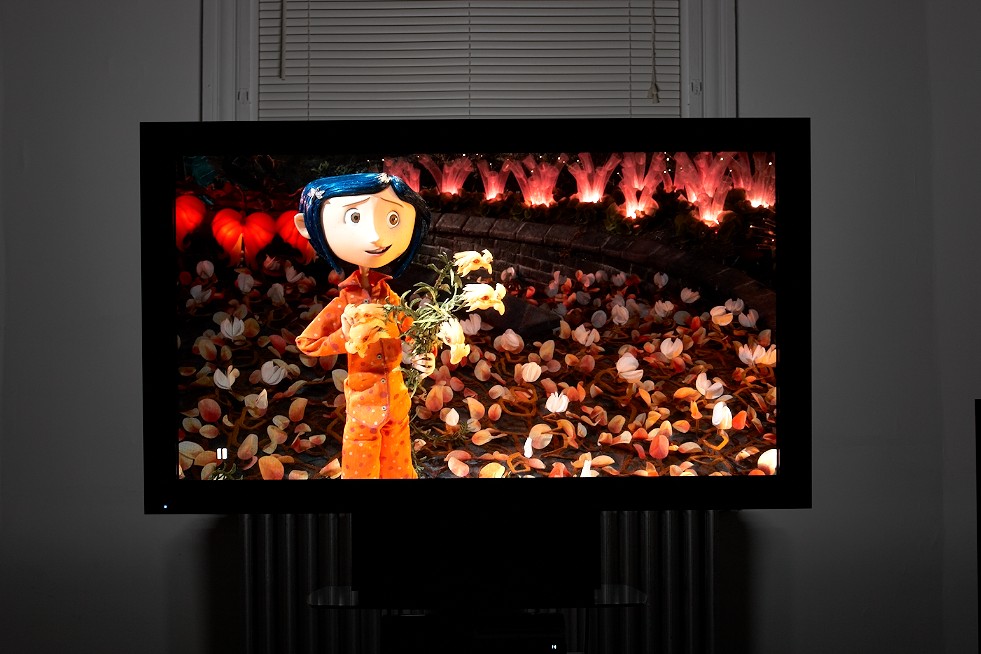I've mentioned a few times that I have a "bias light" behind my screen, and that everyone else should too.
I've attempted to photograph how it affects the image, but because of what the bias light is actually doing, i.e. providing a reference for the eye, the camera is not fooled as easily.
A bias light does two major things: One, it provides a reference white (provided you have neutral colored walls). Human vision tend to compensate for the color of lighting. You'll still see an egg as being white even under a purely red light. A scene in a movie that's lit by a red light will have less visual impact as your eyes will adjust. A constant 6500K reference will make the colors on screen appear more true. Two, it keeps a base level of lighting in the room. Watching a screen in complete dark will cause a constant change in the pupil where a dark scene will make a following bright scene wash out. So some room light is required, but if the light is in front of the screen it can wash out the display, and highlight other objects near the display.

This first image is taken with the over-head room light on. All the bulbs in my apartment are 5900K, 5-phosphor, CFL, with a CRI of 93. They're very good bulbs, almost as good as the bias light. I white balanced on the wall behind the screen.

The second image is with the lights out. This time I went with an auto-white balance as that's what your eyes would be doing without any other reference.

This shot is lit by the bias light located behind the TV. Again the white balance is on the wall. This light is a florescent tube, with a color temp of 6500K, and a 7-phosphor coat, with a CRI of 96. This is a bulb used to color proof commercial goods in a viewing booth. Also notice how you can no longer notice the speaker or the PS3. The rest of the room is equally dark.
What I couldn't simulate is the slow reaction of the eye's iris to changing lighting conditions in a film. If you want a better idea of the subtle differences between the shots, open them in separate tabs and switch back and forth. Notice especially with the first and last that the walls appear to be the same neutral white, but the color on the display becomes more saturated with the bias light shot.
There's also something cozy about a soft glow emanating from behind the TV.



